I am new to Asp.Net Core identity.
I have configured the startup as per below. When I run the code in a normal and incognito browser I get the below error.
I have cleared cookies as previous questions have suggested. What is interesting is a high number of cookies get created when loading the sign screen.
My issue is similar to those described in the below old articles. Both solutions seem outdated.
- https://www.javaer101.com/en/article/18781756.html
- https://blog.bitscry.com/2018/09/19/azure-ad-request-too-long/
using d365fl.DocumentGenerator.blazor_frontend.Data;
using Microsoft.AspNetCore.Authentication.OpenIdConnect;
using Microsoft.AspNetCore.Authorization;
using Microsoft.AspNetCore.Builder;
using Microsoft.AspNetCore.Components;
using Microsoft.AspNetCore.Hosting;
using Microsoft.AspNetCore.HttpsPolicy;
using Microsoft.AspNetCore.Mvc.Authorization;
using Microsoft.Extensions.Configuration;
using Microsoft.Extensions.DependencyInjection;
using Microsoft.Extensions.Hosting;
using Microsoft.Identity.Web;
using Microsoft.IdentityModel.Logging;
namespace d365fl.DocumentGenerator.blazor_frontend
{
public class Startup
{
public Startup(IConfiguration configuration)
{
Configuration = configuration;
}
public IConfiguration Configuration { get; }
// This method gets called by the runtime. Use this method to add services to the container.
// For more information on how to configure your application, visit https://go.microsoft.com/fwlink/?LinkID=398940
public void ConfigureServices(IServiceCollection services)
{
ConfigureIdentiy(services);
services.AddRazorPages();
services.AddServerSideBlazor();
services.AddSingleton<WeatherForecastService>();
}
private void ConfigureIdentiy(IServiceCollection services)
{
services.AddMicrosoftIdentityWebAppAuthentication(Configuration, "AzureAdB2C");
services.AddControllersWithViews(options =>
{
var policy = new AuthorizationPolicyBuilder()
.RequireAuthenticatedUser()
.Build();
options.Filters.Add(new AuthorizeFilter(policy));
});
services.Configure<OpenIdConnectOptions>(Configuration.GetSection("AzureAdB2C"));
}
// This method gets called by the runtime. Use this method to configure the HTTP request pipeline.
public void Configure(IApplicationBuilder app, IWebHostEnvironment env)
{
if (env.IsDevelopment())
{
app.UseDeveloperExceptionPage();
IdentityModelEventSource.ShowPII = true;
}
else
{
app.UseExceptionHandler("/Error");
// The default HSTS value is 30 days. You may want to change this for production scenarios, see https://aka.ms/aspnetcore-hsts.
app.UseHsts();
}
app.UseHttpsRedirection();
app.UseStaticFiles();
app.UseRouting();
app.UseAuthentication();
app.UseAuthorization();
app.UseEndpoints(endpoints =>
{
endpoints.MapControllers();
endpoints.MapBlazorHub();
endpoints.MapFallbackToPage("/_Host");
});
}
}
}
EDIT 1 - HTTP Request from Developer Toolbar

EDIT 2 - Screen Shot of Cookie data from Developer Toolbar / Network Tab


